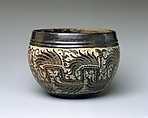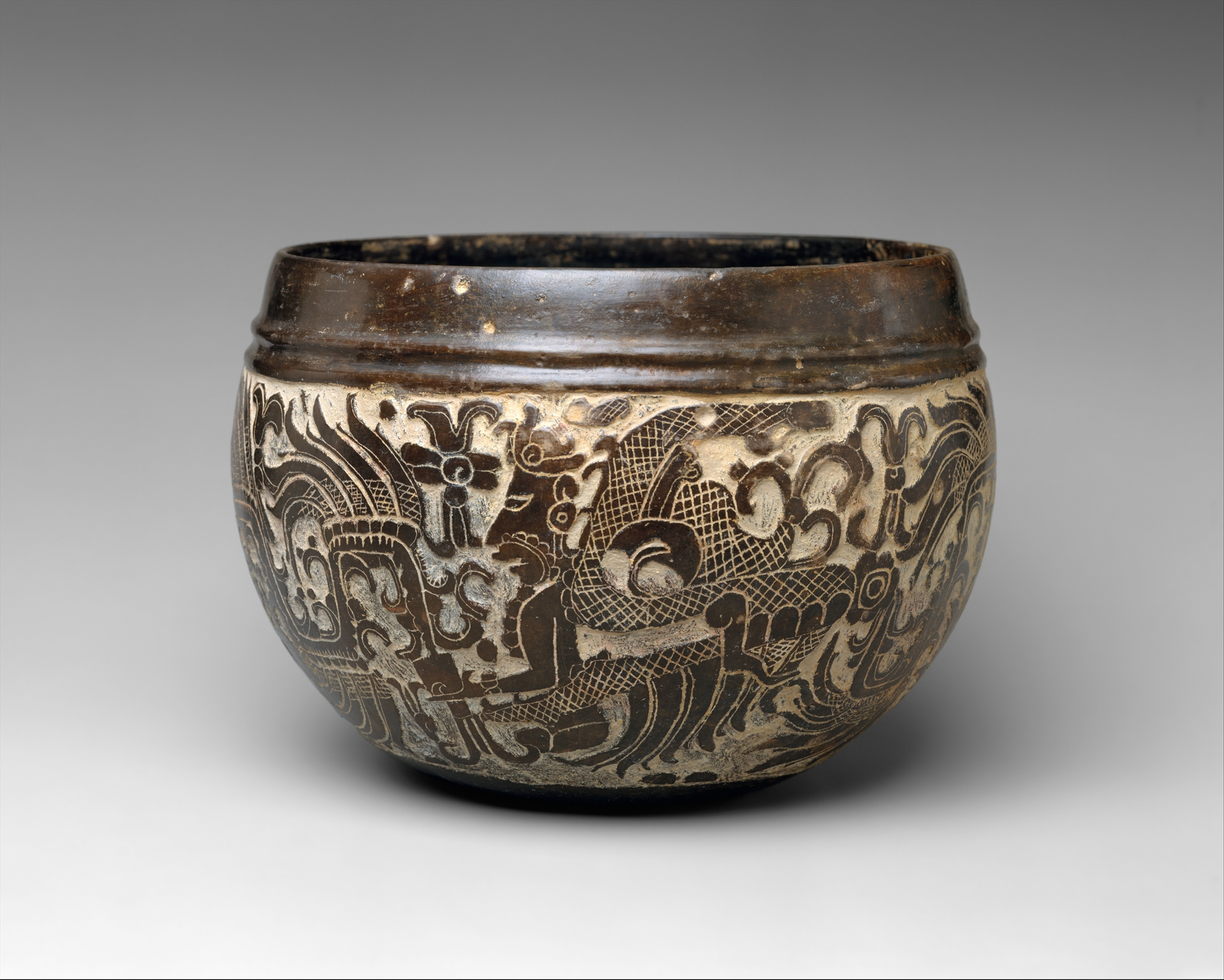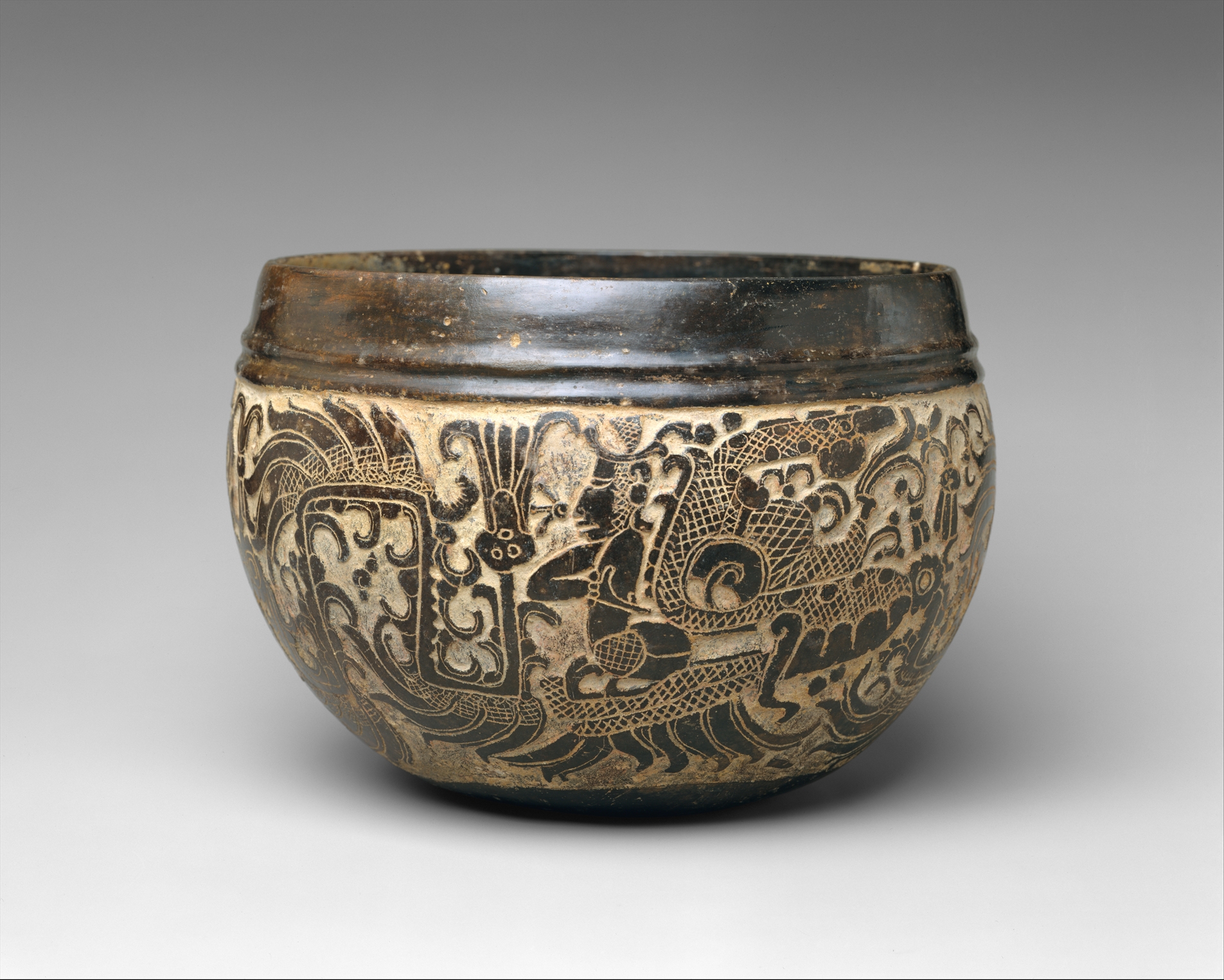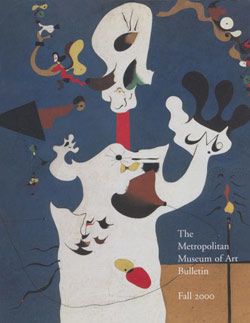Carved Bowl
Not on view
During the fourth through sixth centuries, black serving vessels were buried as funerary offerings for Maya nobility. This bowl is highly burnished, accentuating the luminosity of the labyrinthine mythological scene depicted on its surface. The basal flange at the base of the upper rim indicates that it may once have had a lid. A date using the Maya Long Count calendar, corresponding to June 1, 539 CE, is inscribed on the rim’s inner surface. It may indicate the day of the royal owner’s death and communion with the divine.
The vessel’s visual elements likely represent the watery underworld and journey to the celestial realm within the same composition. Its surface is surrounded by a complex scene of two anthropomorphic figures wearing earspools and jade beads. They emerge from two undulating serpents with feathers, depicted with bodies in the shape of a conch shell. Their carefully incised curvilinear plumes and net-like serpentine scales wrap around the circumference of the bowl leaving no empty space, inviting the viewer to actively turn and unfurl a scene of emergence from the underworld. The human personages may share resonances with later Maya myths of the Hero Twins who travelled to the underworld to resurrect their father, the Maya Maize God (Tedlock 1996: 140–141).
Residues of stucco are present on the body, indicating that a thin and fragile coat of polychrome paint was carefully applied followed by incised decoration using a stylus. The presence of the Mesoamerican Feathered Serpent and the use of stucco, pigment, and incision are characteristic of intercultural influence from the city of Teotihuacan in Central Mexico. The Maya city of Tikal was temporarily conquered by the Teotihuacan military ruler Sihyaj K'ahk’ in 378 CE, with dynasties implementing what is known as talud-tablero (slope and panel entablature) temple architecture and the Feathered Serpent as in icon of martial prowess. This luminous rendering of serpentine imagery represents an intentional negotiation of these visual traditions, with artists often commissioned to reference the deep past for commemorative, portable works of authority.
Although the precise location in which this bowl was made is unknown, the use of incised imagery of deity resurrection was common on ceramics and tomb walls at the city of Calakmul in the Mexican state of Campeche (Delvendahl 2008: 126–127). The vessel combines Maya mythological traditions and Teotihuacan artistic techniques to become a vessel of social identity and historical reinvention.
Brandon Agosto, 2024
Further Reading:
Callaghan, Michael G. ""Paint it black”: Wealth‐in‐people and Early Classic Maya blackware pottery," Economic Anthropology 7 (2020): 228–240.
Delvendahl, Kai. 2008. Calakmul in Sight: History and Archaeology of an Ancient Maya City. Merida, Mexico: Unas Letras Industria Editorial.
Fields, Virginia M. Lords of Creation: The Origins of Maya Kingship. London: Scala; Los Angeles: Los Angeles County Museum of Art, 2005, pp. 198–199.
Laporte, Juan Pedro, and Vilma Fialko. “La cerámica del Clásico Temprano desde el Mundo Perdido, Tikal.” In: Maya Ceramics: Papers from the 1985 Maya Ceramic Conference. Edited by Prudence Rice and Robert J. Sharer, pp. 123–182. British Archaeological Reports International Series 345. Oxford: British Archaeological Reports, 1987.
Tedlock, Dennis. The Popol Vuh: The Definitive Edition of The Mayan Book of The Dawn of Life and The Glories of Gods and Kings. Translated by Dennis Tedlock, New York: Touchstone, 1996.
This image cannot be enlarged, viewed at full screen, or downloaded.
This artwork is meant to be viewed from right to left. Scroll left to view more.





